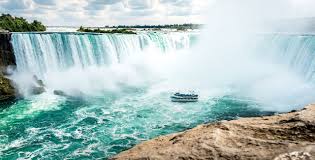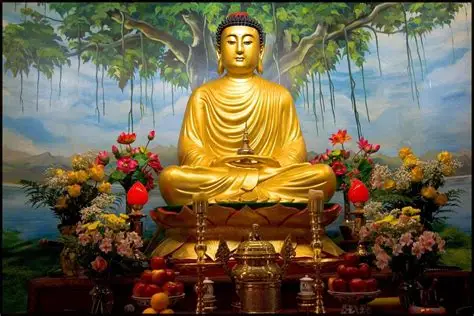India’s spiritual calendar is a vibrant tapestry of rituals, stories, and celebrations. Among these, Buddhist Festivals in India stand out for their serene energy, deep symbolism, and timeless reverence for the teachings of Gautama Buddha. These festivals are not just religious observances—they’re cultural experiences that blend devotion, community, and mindfulness.
Whether you’re a practicing Buddhist, a spiritual seeker, or a curious traveler, these festivals offer a unique window into India’s Buddhist heritage and its living traditions.
🧘 Why Buddhist Festivals Matter
Buddhist festivals commemorate key events in the life of the Buddha—his birth, enlightenment, first sermon, and Mahaparinirvana (final liberation). They also celebrate the values of compassion, non-violence, and inner peace. In India, these festivals are observed in monasteries, temples, and sacred sites across states like Bihar, Uttar Pradesh, Himachal Pradesh, Arunachal Pradesh, and Maharashtra.
Beyond rituals, these festivals foster community bonding, cultural exchange, and spiritual reflection.
📅 Major Buddhist Festivals in India
Here’s a curated list of the most significant Buddhist festivals celebrated across India:
1. Buddha Purnima (Vesak)
- When: Full moon day in April or May
- Where: Bodh Gaya, Sarnath, Kushinagar, and across India
- Significance: Commemorates Buddha’s birth, enlightenment, and death
- Celebrations:
- Chanting of sutras and prayers
- Offerings of flowers, candles, and incense
- Meditation sessions and dharma talks
- Community meals and charitable acts
This is the most widely celebrated Buddhist festival and draws pilgrims from around the world.
2. Asalha Puja (Dhamma Day)
- When: Full moon day in July
- Where: Sarnath and other teaching centers
- Significance: Marks Buddha’s first sermon at Deer Park
- Celebrations:
- Recitation of the Dhammacakkappavattana Sutta
- Monastic ordinations and teachings
- Acts of generosity and reflection on the Four Noble Truths
This festival honors the beginning of the Sangha (monastic community).
3. Magha Puja (Sangha Day)
- When: Full moon day in February or March
- Where: Monasteries and temples across India
- Significance: Celebrates the spontaneous gathering of 1,250 enlightened monks
- Celebrations:
- Candlelight processions
- Meditation and dharma talks
- Renewing vows of ethical conduct
It’s a day to reflect on unity, discipline, and the power of collective wisdom.
4. Kathina Ceremony
- When: End of the rainy retreat (October–November)
- Where: Monasteries in Maharashtra, Sikkim, and Himachal Pradesh
- Significance: Marks the end of Vassa (monastic retreat)
- Celebrations:
- Offering of robes and supplies to monks
- Community feasts and merit-making
- Cultural performances and storytelling
This festival strengthens the bond between lay followers and the monastic community.
5. Losar (Tibetan New Year)
- When: February or March (varies by lunar calendar)
- Where: Dharamshala, Tawang, Ladakh, and Sikkim
- Significance: Celebrates the Tibetan lunar new year
- Celebrations:
- Masked dances and rituals to dispel negativity
- Offerings to deities and protective spirits
- Family gatherings and traditional meals
Losar blends Buddhist rituals with Himalayan cultural traditions.
6. Drukpa Tshe Zhi
- When: Fourth day of the sixth lunar month
- Where: Ladakh and Himalayan monasteries
- Significance: Commemorates Buddha’s first turning of the wheel of dharma
- Celebrations:
- Ritual dances and prayers
- Offerings and community teachings
- Reflection on the Eightfold Path
This festival is especially popular in Vajrayana Buddhist communities.
🧳 What’s Included in Buddhist Festival Travel Packages?
If you’re planning to attend Buddhist festivals in India, here’s what typical travel packages include:
- Accommodation: Guesthouses, monastery stays, or hotels near festival sites
- Transport: Transfers from airports or railway stations, and local travel
- Meals: Often vegetarian, with options for monastery dining
- Guided Tours: Spiritual guides who explain rituals, history, and local customs
- Meditation Sessions: Opportunities to practice mindfulness in sacred settings
- Cultural Experiences: Chanting ceremonies, prayer flag rituals, and temple art tours
Premium packages may also include wellness retreats, photography workshops, or offbeat spiritual destinations.
🧘 Spiritual Retreats During Festival Season
Many Buddhist festivals coincide with retreats and teachings:
- Vipassana Centers: Silent meditation retreats in Bodh Gaya, Igatpuri, and Dharamkot
- Yoga Ashrams: Combine Buddhist philosophy with yogic practices
- Mindfulness Workshops: Held in monasteries and cultural centers
- Satsang & Dharma Talks: Guided teachings by monks and scholars
These retreats attract both domestic and international travelers seeking inner peace and clarity.
👨👩👧 Family-Friendly Buddhist Festival Tours
Buddhist festivals are deeply inclusive and family-friendly. Kid-friendly packages often include:
- Shorter Itineraries: Designed to suit elders and children
- Safe Accommodation: Clean, accessible stays near temples
- Cultural Activities: Storytelling, local crafts, and devotional music
- Health Support: On-call doctors, wheelchair access, and dietary options
Destinations like Sarnath, Bodh Gaya, and Dharamshala are popular for family pilgrimages.
💑 Romantic Spiritual Escapes
For couples seeking a meaningful getaway, Buddhist festivals offer tranquility and bonding.
- Sunrise Meditation at Bodh Gaya: A shared moment of peace and reflection
- Temple Trails in Sanchi: Exploring sacred art and architecture
- Stay in Heritage Monasteries: Quiet retreats with spiritual ambiance
- Couple’s Yoga Sessions: Guided wellness experiences in serene settings
These packages often include private rituals, scenic stays, and curated experiences.
🧭 Travel Tips for Attending Buddhist Festivals
To make the most of your spiritual journey, keep these tips in mind:
- Dress Modestly: Cover shoulders and legs, especially in monasteries
- Respect Rituals: Observe quietly, follow local customs, and ask before photographing
- Stay Hydrated: Many sites involve walking or climbing—carry water and snacks
- Language Basics: Learn a few local phrases for smoother interactions
- Plan Around Crowds: Festivals can draw large gatherings—book early and stay flexible
📦 Sample Buddhist Festival Tour Packages
Here’s a quick snapshot of curated Buddhist festival travel packages:
| Package Name | Duration | Highlights | Ideal For |
| Buddha Purnima Pilgrimage | 5D/4N | Bodh Gaya, Sarnath, Kushinagar | Spiritual Seekers |
| Himalayan Losar Celebration | 6D/5N | Dharamshala, Tawang, Ladakh | Culture Enthusiasts |
| Sangha Day Retreat | 4D/3N | Sarnath, Varanasi, Jetavana | Mindfulness Lovers |
| Kathina Festival Experience | 3D/2N | Maharashtra monasteries, community rituals | Families |
| Enlightenment Trail with Retreat | 7D/6N | Bodh Gaya, Rajgir, Vaishali | Solo Travelers |
Sources:
🌟 Why Celebrate Buddhist Festivals in India?
These festivals aren’t just events—they’re experiences. Here’s why they matter:
- Spiritual Depth: Connect with the teachings of the Buddha
- Cultural Richness: Discover ancient rituals, art, and community traditions
- Peaceful Ambiance: Ideal for reflection, meditation, and healing
- Global Relevance: Join pilgrims and seekers from around the world
- Accessible for All: Packages range from budget to luxury, solo to family-friendly
Buddhist Festivals in India offer more than celebration—they offer transformation. Whether you’re lighting a lamp at the Mahabodhi Temple, chanting with monks in the Himalayas, or simply sitting in silence during a full moon, these moments invite you to pause, reflect, and reconnect with the essence of peace.
















